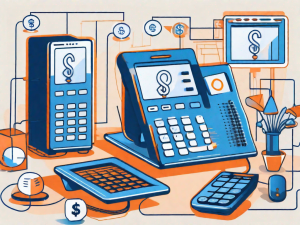Waiting is a universal experience. Whether it’s standing in line at the grocery store or waiting for your turn at the doctor’s office, we’ve all been there. And let’s be honest, waiting can be downright frustrating. In today’s fast-paced world, nobody wants to waste their precious time just twiddling their thumbs. That’s why it’s crucial for businesses to find efficient ways of reducing wait times and keeping their customers happy. In this article, we’ll explore 10 effective strategies that businesses can implement to make waiting a breeze. So sit back, relax, and let’s dive in!
Understanding the Impact of Long Wait Times
Before we delve into the strategies, let’s take a moment to understand why long wait times can be such a pain. It’s not just a matter of impatience; there’s actually some psychology behind it. Research shows that waiting can lead to feelings of anxiety, frustration, and even anger. That’s right, those seemingly innocent minutes ticking away on the clock can actually have a significant impact on customer satisfaction. But it doesn’t stop there. Long wait times can also have serious business consequences. Customers who are forced to wait too long are more likely to abandon their purchase or seek out a competitor who offers faster service. That’s definitely not the outcome any business wants!
The Psychology Behind Waiting
So why exactly do we hate waiting so much? Well, for starters, waiting can make us feel like we have no control over our time. When we’re waiting, we’re essentially at the mercy of the clock, and that lack of control can be incredibly frustrating. Additionally, research has shown that the perceived wait time can differ greatly from the actual wait time. Factors such as the environment, the presence of distractions, and how occupied we are can all impact how long a wait feels. In other words, a minute can feel like an eternity or pass by in a blink of an eye, depending on the circumstances.
The Business Consequences of Long Waits
From a business perspective, long wait times can have detrimental effects. Not only do they lead to dissatisfied customers, but they can also damage a company’s reputation. In today’s age of social media, where customers can easily share their negative experiences with the world, a single bad review can snowball into a PR nightmare. Moreover, long wait times can also impact employee morale. Dealing with frustrated customers all day can take a toll on even the most patient employees. So it’s in everyone’s best interest to find ways of reducing those wait times and keeping everyone happy!
The Importance of Efficient Operations
Now that we understand the negative effects of long wait times, let’s explore the importance of efficient operations. Simply put, efficient operations are the backbone of any business. When operations are streamlined and optimized, wait times naturally decrease, and customers are happier. It’s a win-win situation! But how exactly can a business achieve efficient operations? Let’s take a look at some strategies.
The Role of Process Optimization
Process optimization is all about finding the most efficient way of doing things. By analyzing each step of a process and identifying bottlenecks, businesses can eliminate unnecessary steps and streamline their operations. This not only reduces wait times but also improves overall efficiency. So get your magnifying glass out and start examining those processes!
The Power of Predictive Analytics
Predictive analytics is like having a crystal ball for your business. By analyzing historical data and patterns, businesses can predict future demand and adjust their operations accordingly. This means that resources can be allocated more efficiently, reducing the chances of long wait times. So why rely on guesswork when you have the power of data on your side?
Strategy 1: Implementing a Queue Management System
Now that we’ve covered the importance of efficient operations, let’s dive into the first strategy for reducing wait times: implementing a queue management system. A queue management system is like a traffic cop for your business. It helps you optimize the flow of customers, ensuring that everyone is served in a timely manner. By providing clear instructions and real-time updates, a queue management system can turn waiting into a more organized and manageable experience for both customers and employees.
Strategy 2: Utilizing Self-Service Options
Who doesn’t love a little DIY? By offering self-service options, businesses can empower customers to take control of their waiting experience. Whether it’s self-checkout kiosks or online appointment booking, giving customers the freedom to manage their own wait times can significantly decrease overall waiting time. Plus, it’s a win-win situation. Customers get the convenience they crave, and businesses get to optimize their resources.
Strategy 3: Streamlining the Check-In Process
First impressions matter, and that includes the check-in process. By streamlining the check-in process, businesses can ensure a smooth and efficient start to the customer’s experience. Whether it’s through mobile check-ins or automated registration, minimizing paperwork and reducing manual processes can save valuable time and energy. So say goodbye to long queues at the front desk and hello to a seamless check-in experience!
Strategy 4: Enhancing Staff Training and Development
No matter how efficient your operations are, if your staff isn’t up to par, you’re bound to encounter long wait times. That’s why investing in staff training and development is crucial. By equipping your employees with the necessary skills and knowledge, they’ll be able to handle customer inquiries and transactions more efficiently. Remember, a happy and well-trained staff means happy customers!
Strategy 5: Leveraging Technology for Efficiency
Technology is your best friend when it comes to reducing wait times. Whether it’s through mobile apps for ordering or virtual queuing systems, leveraging technology can streamline your operations and ensure a smooth waiting experience for customers. So hop on the tech train and watch those wait times melt away.
Strategy 6: Adopting Appointment Scheduling Software
Who doesn’t love a little structure in their life? By adopting appointment scheduling software, businesses can provide customers with the option to book specific time slots. This not only eliminates the need for waiting in line but also allows businesses to allocate their resources more efficiently. So let your customers take the wheel and schedule their appointments at their convenience!
Strategy 7: Encouraging Off-Peak Visits
Timing is everything, and that includes wait times. By encouraging off-peak visits, businesses can spread out customer demand and reduce congestion during peak hours. This not only leads to shorter wait times but also ensures a more relaxed and enjoyable experience for customers. So consider offering special incentives for visiting during quieter periods or promoting alternative service times to optimize your operations. Providing round-the-clock customer support can be of great help here as customers can enjoy lower wait times after hours.
Strategy 8: Improving Communication with Customers
Communication is key, especially when it comes to managing wait times. By keeping customers informed about their wait times through clear signage, digital displays, or text message notifications, you can minimize frustration and make the wait feel shorter. Additionally, providing updates on any delays or changes in the waiting time can help manage expectations and prevent any unpleasant surprises. Remember, a little communication goes a long way.
Strategy 9: Offering Virtual Waiting Options
Who says you have to physically wait in line? By offering virtual waiting options, businesses can give customers the freedom to explore the surrounding area while they wait. Whether it’s a virtual queue or a pager system, virtual waiting options allow customers to make the most of their time and alleviate the feeling of being trapped in line. So bid farewell to traditional queues and embrace the virtual waiting revolution!
Strategy 10: Creating a Comfortable Waiting Environment
Last but not least, creating a comfortable waiting environment can make a world of difference. From comfortable seating to entertainment options, providing a pleasant waiting area can help distract customers from the passage of time and make the wait more bearable. So think cozy couches, captivating magazines, or even interactive displays to keep your customers engaged and happy.
Conclusion
And there you have it, 10 effective strategies for reducing wait times and keeping your customers happy. Whether it’s implementing a queue management system, leveraging technology, or simply creating a comfortable waiting environment, there are plenty of ways businesses can optimize their operations and ensure a smooth waiting experience. So take a step back, put yourself in your customer’s shoes, and start implementing these strategies today. After all, time is money, and nobody wants to waste it either!
Ready to take your customer service to the next level and slash those wait times? Try LiveHelpNow, the omnichannel customer support suite that revolutionizes communication across all platforms. From Chat to SMS, social media to Email, and even phone calls, our AI-driven solutions automate routine inquiries, freeing up your agents to tackle complex issues. With LiveHelpNow, you’re not just reducing wait times; you’re enhancing the entire customer experience. Start your Free 30 Day Trial today and watch your business transform!




